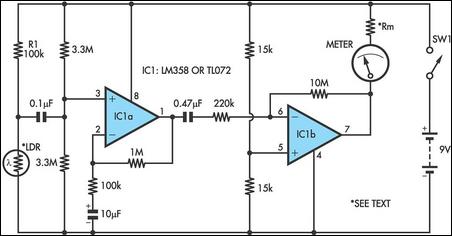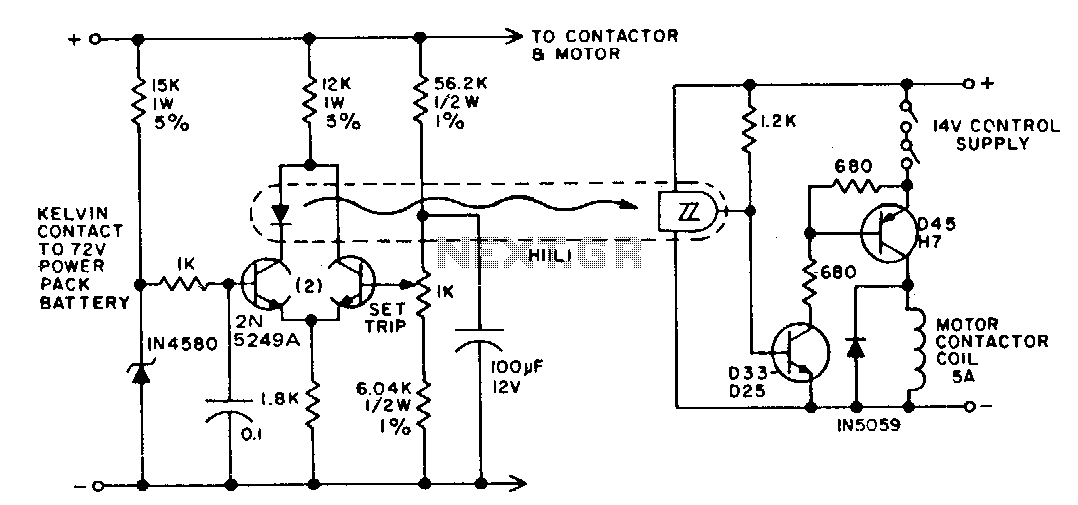
Car battery monitor

A warning light (LED) indicates when the battery voltage falls below the level set by a 10 K ohm potentiometer. It can indicate that the battery is defective or needs charging if cranking drops the battery voltage below the preset "safe" limit.
The circuit comprises a battery voltage monitoring system utilizing a light-emitting diode (LED) as a visual indicator. The design incorporates a 10 K ohm potentiometer that allows for the adjustment of the voltage threshold at which the LED will activate. This threshold is crucial for determining the acceptable operating voltage range for the battery.
When the system is powered, the battery voltage is continuously monitored. If the voltage drops below the set threshold due to high current draw, such as during engine cranking, the voltage divider formed by the potentiometer and an additional resistor (if used) will trigger the LED. This LED serves as an alert to the user, indicating that the battery voltage has reached a critical level, which may suggest that the battery is either defective or in need of recharging.
The circuit can be implemented using a simple comparator configuration or an operational amplifier (op-amp) for more precise voltage detection. Additional components may include a resistor in series with the LED to limit current, ensuring the LED operates within its safe limits.
Overall, this circuit is an essential tool for monitoring battery health and ensuring that the vehicle's electrical system operates efficiently, preventing potential failures due to inadequate battery voltage.Warning light (LED) indicates when battery voltage falls below level set by 10 K pot Can indicate that battery is defective or needs charging if cranking drops battery voltage below preset "safe" limit. 🔗 External reference
The circuit comprises a battery voltage monitoring system utilizing a light-emitting diode (LED) as a visual indicator. The design incorporates a 10 K ohm potentiometer that allows for the adjustment of the voltage threshold at which the LED will activate. This threshold is crucial for determining the acceptable operating voltage range for the battery.
When the system is powered, the battery voltage is continuously monitored. If the voltage drops below the set threshold due to high current draw, such as during engine cranking, the voltage divider formed by the potentiometer and an additional resistor (if used) will trigger the LED. This LED serves as an alert to the user, indicating that the battery voltage has reached a critical level, which may suggest that the battery is either defective or in need of recharging.
The circuit can be implemented using a simple comparator configuration or an operational amplifier (op-amp) for more precise voltage detection. Additional components may include a resistor in series with the LED to limit current, ensuring the LED operates within its safe limits.
Overall, this circuit is an essential tool for monitoring battery health and ensuring that the vehicle's electrical system operates efficiently, preventing potential failures due to inadequate battery voltage.Warning light (LED) indicates when battery voltage falls below level set by 10 K pot Can indicate that battery is defective or needs charging if cranking drops battery voltage below preset "safe" limit. 🔗 External reference





